Satellite images released by the Centre for Strategic and International Studies (CSIS), a US-based think tank, show that the construction of China’s third aircraft carrier is almost completed. It is estimated that the carrier – Type 003 – will be ready in 3 to 6 months. The images reveal that the installation of the carrier’s main external components is nearing completion.
The satellite imagery captured on October 23, 2021 has shown “steady progress” recently since construction began in March 2017 at the Shanghai Jiangnan Shipyard. Construction was reportedly delayed in June 2017 due to electromagnetic catapults tests. By November, however, China managed to develop an IEP (integrated electric propulsion) system to power the catapults.
The inclusion of catapults, which is one of the major components of the carrier that is nearing completion, on the Type 003 is a major leap forward for the People’s Liberation Army Navy (PLAN). Once ready, the ship will not only be the country’s third aircraft carrier, but the first most advanced carrier that uses the same catapult system currently used by U.S. aircraft carriers.
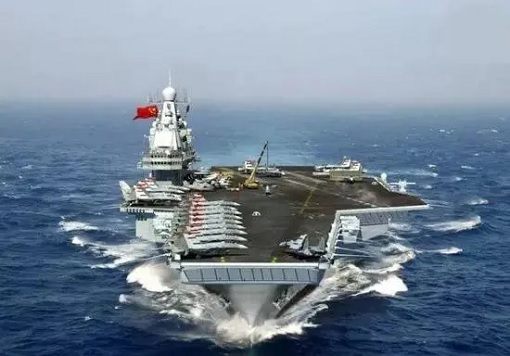
The second generation aircraft carrier, unlike its sister carriers – Liaoning and Shandong – which were based on outdated “sky-jump” Soviet technology, will catapult China into an exclusive club with the U.S. and France. The new catapult launchers – CATOBAR (Catapult Assisted Take-Off But Arrested Recovery) will allow China to launch a wider variety of fixed-wing aircraft with heavier payloads and more fuel.
While most CATOBAR systems are steam driven, the Chinese version of electromagnetic is the similar one developed for the U.S. Navy’s new Gerald R. Ford class of carriers. The progress can be considered impressive considering that it was only in 2019 that Shandong carrier entered service, about 7 years after Liaoning entered service in 2012.
The Liaoning, which was bought from Ukraine in 1998, was upgraded by China prior to commissioning in 2012. It means while the Chinese military took between 5 to 7 years to learn the Soviet technology before domestically manufacture Shandong in 2015, it took an even shorter time to build its “second generation” aircraft carrier capable of rivalling the US’ own aircraft launching technology.
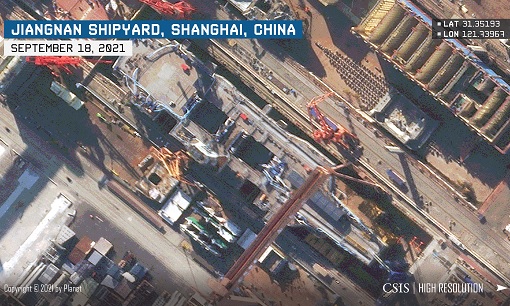
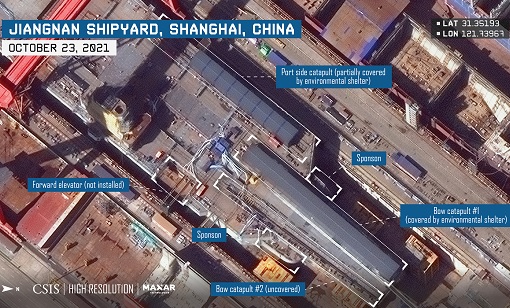
Matthew Funaiole, senior fellow at the CSIS’s China Project, said the Type 003 would be the Chinese military’s “first foray into a modern aircraft carrier”. He said – “This is a pretty significant step forward. They’ve really committed to building out a carrier program, and they continue to push the boundaries of what they’re able to do.”
However, the U.S. Department of Defence (DOD) estimated that the Chinese latest carrier would be in active service only in 2024 (from an earlier projection of 2023). The Type 003 might be years away from going into active service, but when it is finally ready, the U.S. can expect China to produce more aircraft carriers at mind-boggling speed.
Already, China now possesses the largest naval force in the world, with 355 ships and counting. And the Pentagon estimated the People’s Liberation Army Navy (PLAN) will boost its inventory to 420 ships within the next four years (2025). By 2030, it is projected to have 460 ships. The U.S. Navy has about 251 active ships in commission, with plans to increase its fleet to 355 ships by 2049.
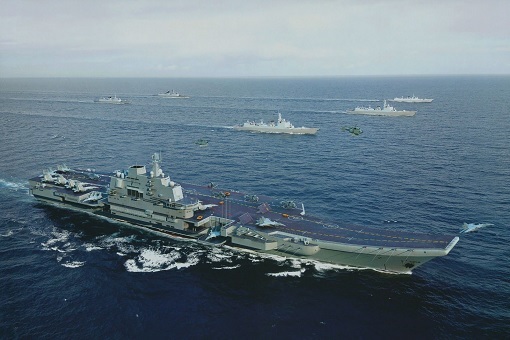
The Liaoning and Shandong were not seen as serious threats to the U.S. military power due to its limitations. However, the emergence of Type 003 would definitely be a game-changer. China wants to have a world-class navy and it wants to send a signal to the world that it has a world-class navy. The immediate goal isn’t about its combat capability, but the ability to project power.
Aircraft launched by catapults can get airborne quicker and with greater quantities of fuel and ammunition, providing an advantage over planes launched by ski jump. With the new catapult system, China can essentially deploy a new mix of aircraft at sea, including airborne early-warning and control aircraft, tankers and electronic-jamming planes.
Based on a US Congressional Research report in October, the Chinese Type 003 was expected to have a displacement of around 100,000 tons – similar to the U.S. Navy’s supercarriers like Gerald R. Ford-class. Analyst Robert Farley believes the Type 003 will be the “largest and most advanced aircraft carrier ever built outside the United States” when completed.
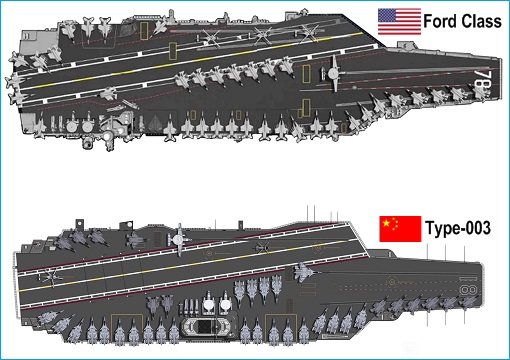
The Type 003 may not be a nuclear-powered aircraft carrier like the U.S. carriers, but for the time being, China can live with it because its immediate interests are in the South China Sea. The moment the next carriers being built at the Shanghai Jiangnan Shipyard are nuclear-powered, it would be the time the U.S. should be concerned. The only thing the Chinese Navy lacks is experience and practice.
Like it or not, Beijing will have to build nuclear-powered aircraft carriers sooner or later in order to venture beyond the South China Sea to gain experience. While it’s true that the U.S. has been operating aircraft carriers for generations, both in combat and peacetime since before World War II, it’s also true that lots of time had been wasted or spent in correcting mistakes.
Therefore, China can cut short the learning curve by studying and learning from the U.S. Navy, and in the process improves the right mix of support vessels in the formation of a carrier strike group, for example. Type 003 could serve as both primary combat and training carrier, the same way Liaoning was used to train the Chinese Navy while Shandong was being built.
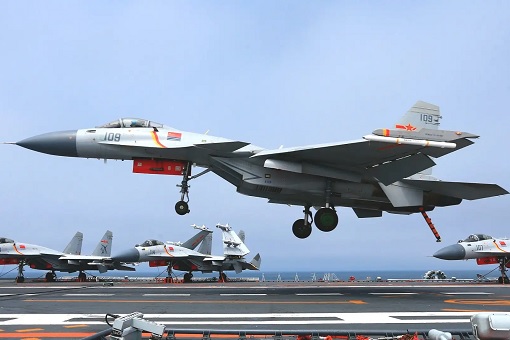
Because China already has 355 ships, creating a new “carrier strike group” is just a matter of building a new aircraft carrier and assigns the support vessels to the Mothership. Prior to Type 003, Liaoning and Shandong were limited to carrying aircrafts like Shenyang J-15 fighter jets (a prototype of Russian Sukhoi Su-33). While J-15 was comparable to F/A-18, they are nowhere near American F-35 fighters.
With the entrance of Type 003, not only the aircraft carrier with a flat-top flight deck will be able to carry 84 fighter jets (Shandong carries only 44 aircrafts) as well as fixed-wing AWACS (Airborne Warning And Control System), it can transport newly designed fifth-generation Shenyang J-31 stealth fighters to rival the US Air Force’s F-22 and F-35.
The Chinese latest carrier could transport a combination of J-15, J-31 and newer version of stealth fighters. Besides outfitted with a layered of defence network and various types of radars and scanners capable or detecting targets 400 kilometres away, the Type 003’s command, control, and battle management systems are identical to those found aboard the US. Navy’s Ford-class aircraft carriers.
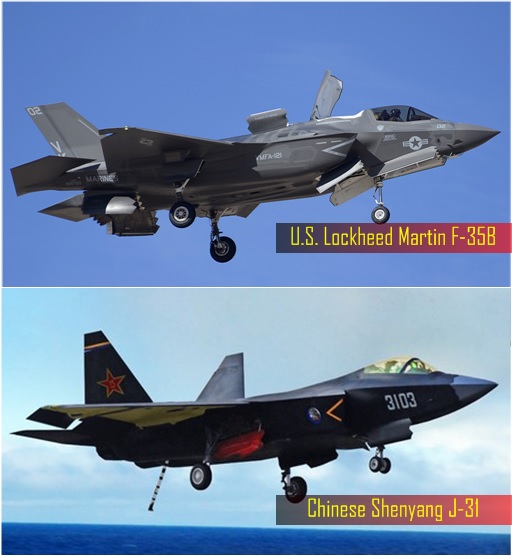
So far, the Jiangnan Shipyard has not shown any evidence of construction on a fourth Chinese carrier. But everyone, including the U.S., expects the Type 004 to be nuclear powered. President Xi Jinping has pledged to transform China’s Navy to “Blue-Water-Navy” from green-water-navy when the country was celebrating the 70th anniversary of the founding of its naval force.
There’s little doubt that the Chinese Navy’s capability will be significantly enhanced by the Type 003 aircraft carrier’s tremendous firepower and capacity to operate at long distance. The U.S. may feel threatened of Chinese carrier strike groups travelling beyond the first island chain, including Taiwan, Philippines and Japan for obvious reasons.
But China needs to protect its interests and assets, the same reasons used by the U.S. for as long as one can remember. Its foreign base – Djibouti port – has been modified to welcome a Chinese aircraft carrier, most likely the Type 004, which will be not only nuclear powered, but has enough electricity to power laser weapons and railguns currently under development.
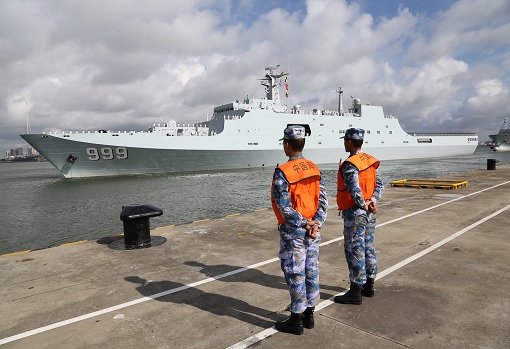
Other Articles That May Interest You …
- Damaged Even Before Go To War – How A $3 Billion “Crown Jewel” US Submarine Crashed Into An Undersea Mountain
- China Launches First 10,000-Ton Coast Guard Vessel – The “Monster” Ship That Operates 90 Days Without Resupply
- Warning To The U.S. And Taiwan – Here’s Why China Sent Record 56 Warplanes Into Taiwan, Raising Fears Of War
- President Xi Warns China Will Never Be Bullied – The U.S. Not Impressed China Is Building 120 Nuclear Missile Silos
- Economic Destabilization – How China Prepares For American & Japanese Military Interference In Taiwan Conflict
- China Suddenly Banned Taiwanese Pineapples – And Taiwan Says The Political Retaliation Is Unfair & Unfriendly
- Warning To The U.S. – China Fires Nuclear-Capable “Aircraft-Carrier Killer” Ballistic Missiles In South China Sea
- Leaked Proposal For “Project XX6” – China Plans To Build A New Type Of Assault Aircraft Carrier
- China Tests Anti-Ship Ballistic Missiles In South China Sea – Here’s Why The U.S. Is Extremely Upset
- Chinese Flag Raised At Sri Lanka Port Raises Concern Of China Secret Naval Base
- Watch Out US, Japan, India – China Launches Asia’s Biggest Type 055 Destroyer

|
|
November 11th, 2021 by financetwitter
|


|

|

|

|

|

|




























Comments
Add your comment now.
Leave a Reply